Between the sheets - 1972
History through the lens of a beautiful Blades programme.
Nick Hamer
It’s Tuesday, 8 February 1972. A match programme costs sixpence. On its backcover, names are printed in block capitals: HEMSLEY, BADGER, WOODWARD. The opposition?…
Sheffield United were ninth in Division One. After being knocked out of the FA Cup in the 3rd round by Cardiff City, there were gaps in the calendar presenting an opportunity for Inter-European football at Bramall Lane. This had not been seen since Eintracht Frankfurt visited Sheffield in 1961 and lost 3-1 to the Blades.
Our opponents this time came from east of Frankfurt, a team inside the USSR who, having won the Soviet Top League in 1971, were one of the most successful sides to come out of the Soviet Union — Kiev Dynamo. In the run-up, the Blades had suffered a 5-0 defeat to Arsenal (sound familiar?) and Badger, Woodward, Colquhoun & co were looking for improvement.
Outside the footballing world, tensions between the East and West were relaxing and the Détente opened up the possibility for President Richard Nixon to meet the then-leader of the Soviet Union, Leonid Brezhnev. The meeting signalled the start of a new and potentially more peaceful relationship between the two global superpowers — gone was the ‘Red Revolution’, but not in the programme.
Inside LANE LINE UP, as it was known then, Sheffield United chairman Dick Wragg penned an open letter to the visiting side in the official souvenir magazine ‘Lane Line Up’ thoughtfully translated for the visitors.
It is with the greatest pleasure that I heartily welcome our visitors from Russia, the Kiev Dynamo team and officials, to Sheffield and in particular to Bramall Lane. We know the Kiev club by repute and we are aware of the high standing in which they are held in their own country and throughout Europe.
Over the years, teams from many countries have played here and we hope this will continue. Football is a sport which spreads friendship throughout the world. As a member of the Football Association Council and the England International Committee, travelling many countries, I know how much the bonds of friendship mean.
To all those from the Soviet Union I wish health and happiness and many years in the game we all so much enjoy.
Best wishes,
RICHARD WRAGG, Club Chairman.
As one can imagine, carrying out due diligence and research on opposition was difficult back then. Even more so when it meant crossing the Iron Curtain. However, then-program editor Harold Martin gave it a go.
His article on the opposition explained the history of Kiev Dynamo. He tells us that in Russia it’s spelt Dinamo, before offering up a short profile on eight of the potential starting 11. Those include Yevgeny Rudakov, the man charged with the almost impossible task of replacing the legendary Lev Yashin, and outside-left Anatoliy Pusatch, who is described as having a remarkable dribble.
Harold unfortunately was unable to source the first names of certain players, or at least that is my guess, as they were not mentioned in the profiles nor on the back cover detailing the squads for the friendly fixture.
Over 18,000 were in attendance that day to see John Harris’ side. The match would end in a 1-2 defeat for the Blades, with Gil Reece notching our solitary goal. The result had little bearing on the season as a whole. United would end up in ninth place, Dynamo would finish runners-up in the Soviet Top League, and some of their players would go on to finish runners-up in the European Championships of that year, as well as finishing third in the Olympic Games.
It might have been a friendly fixture, but its organisation amongst a busy schedule speaks to an entirely different world both in terms of football and geopolitics — the USSR doesn’t exist and Kiev (Kyiv) certainly isn’t in it. At the same time, so much remains the same. The history of conflict in the region is writ large today. Richard Wragg’s welcoming letter reminds us that footballer was a uniting force then, and remains - on the whole - a force for connection now.
In some ways, the biggest changes can be seen in the content of the programme itself. A paper-thin artefact with hand-drawn logos has been replaced by something denser and more plastic. The limitation of three-colour printing has given way to a constellation of brighter shades, but somehow today’s programmes just aren’t the same — it’s hard to put your finger on it.
What has changed for the better are the reflections on social attitudes. Today, you wouldn’t find cast in quite the same way a Lane Personality feature about Receptionist cum Telephonist cum Shorthand-typist, Kathryn Moxon. On reading the article, we learn that she is an ardent supporter, a long-time club servant, with football-playing brothers and “no particular boyfriend”…
Between these sheets, we have a tiny window into time 51 years ago. Then as now, we occupy the top rung of the English football ladder. Then as now, we all hope to be saying this again soon:



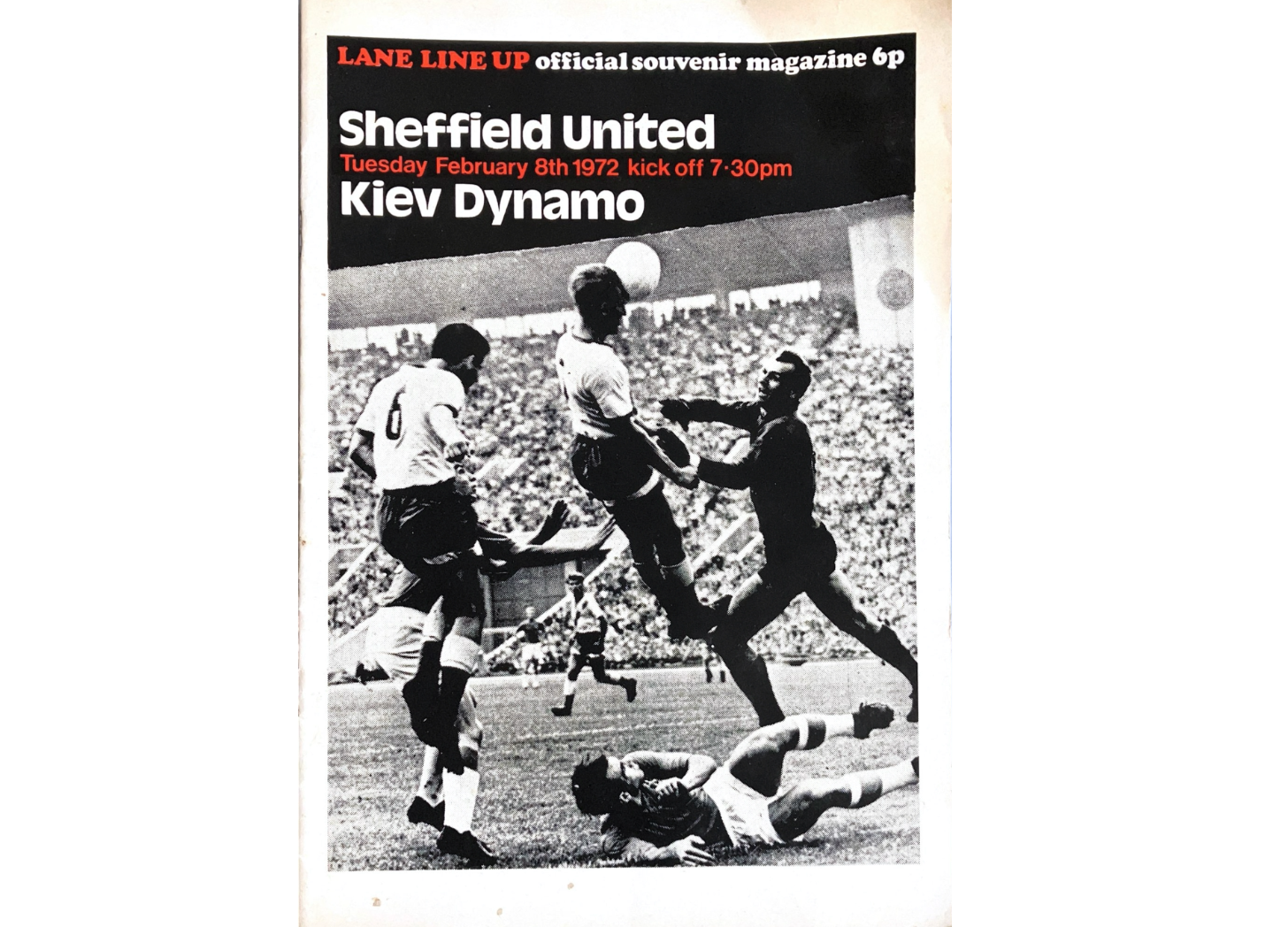
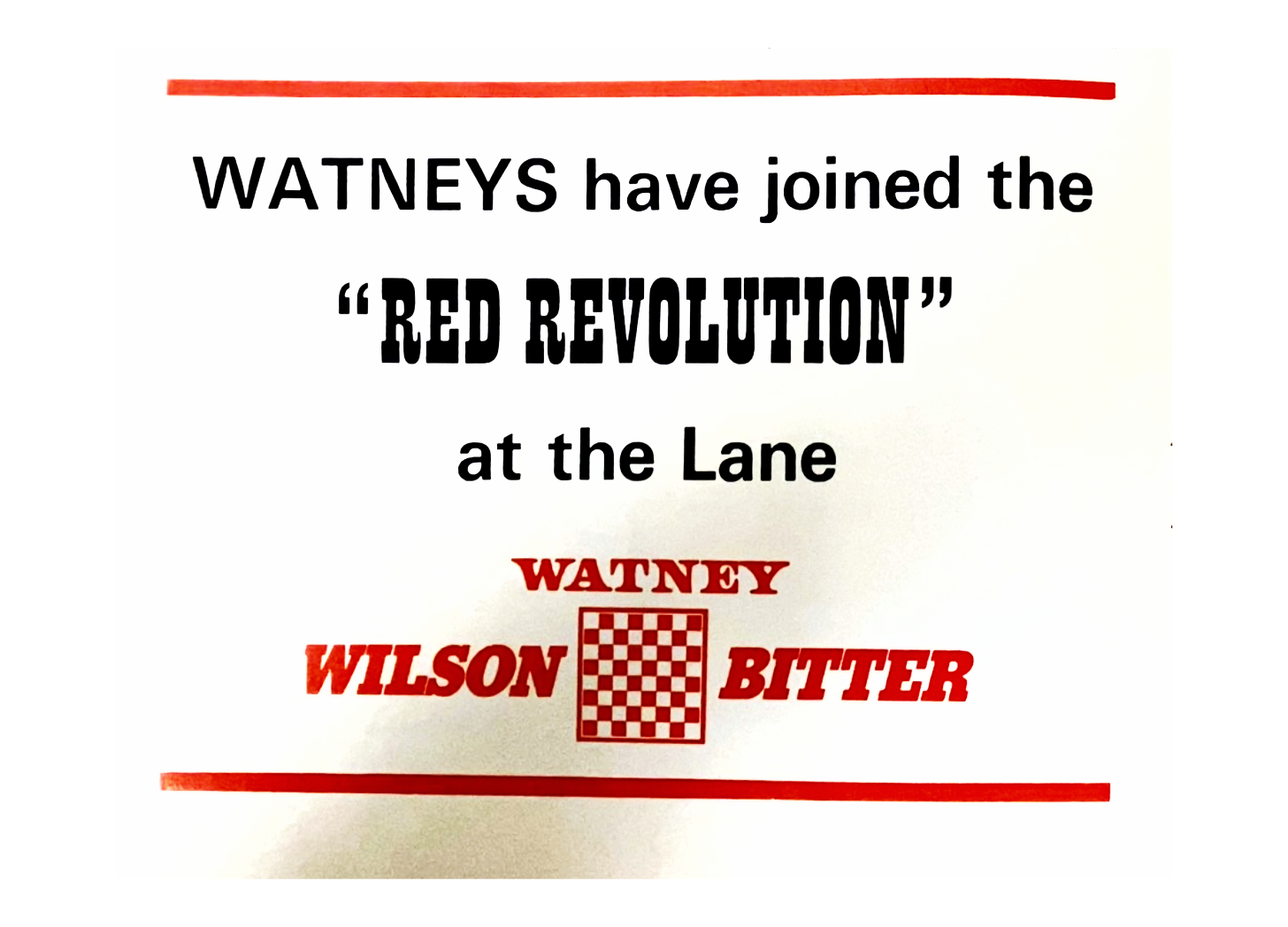
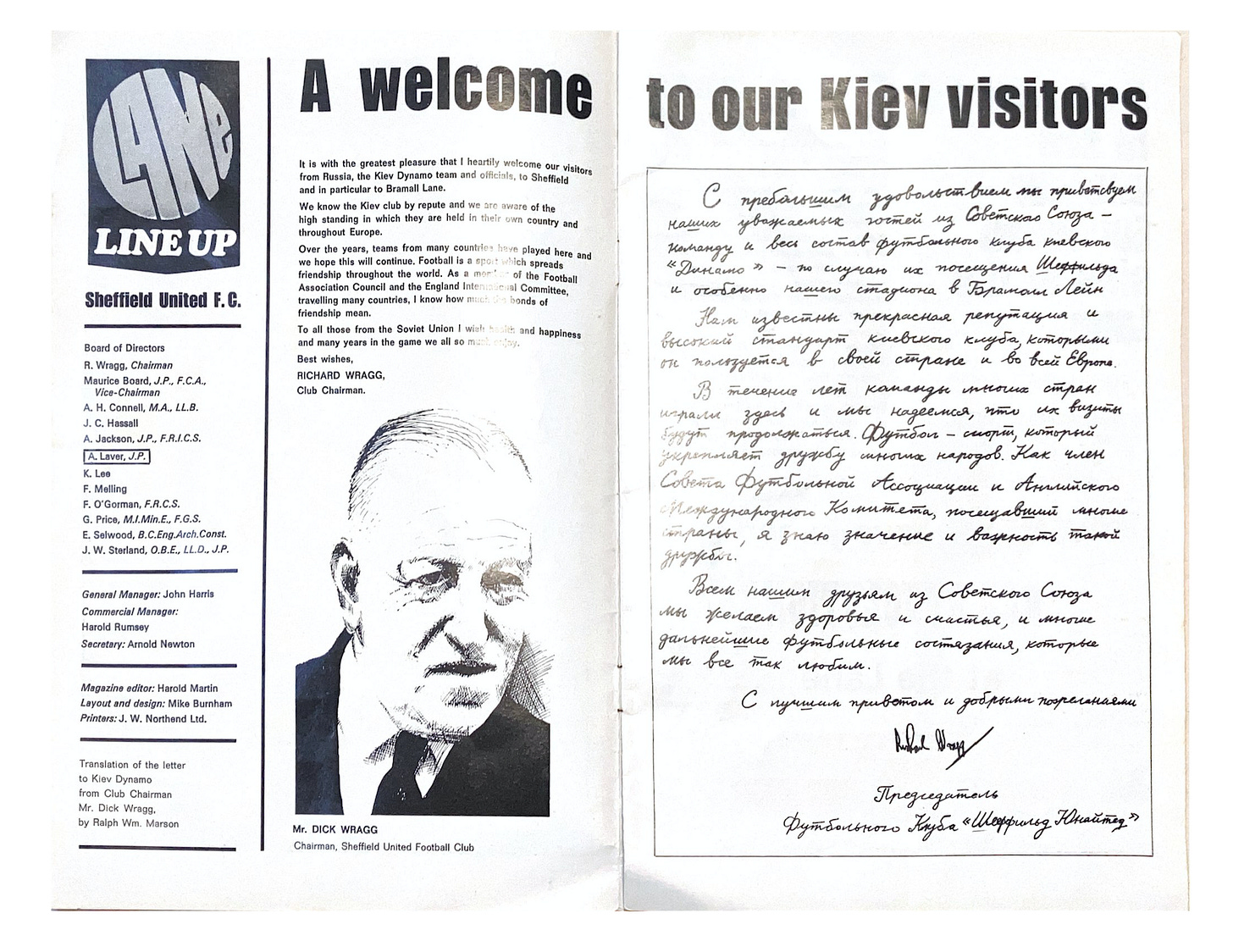
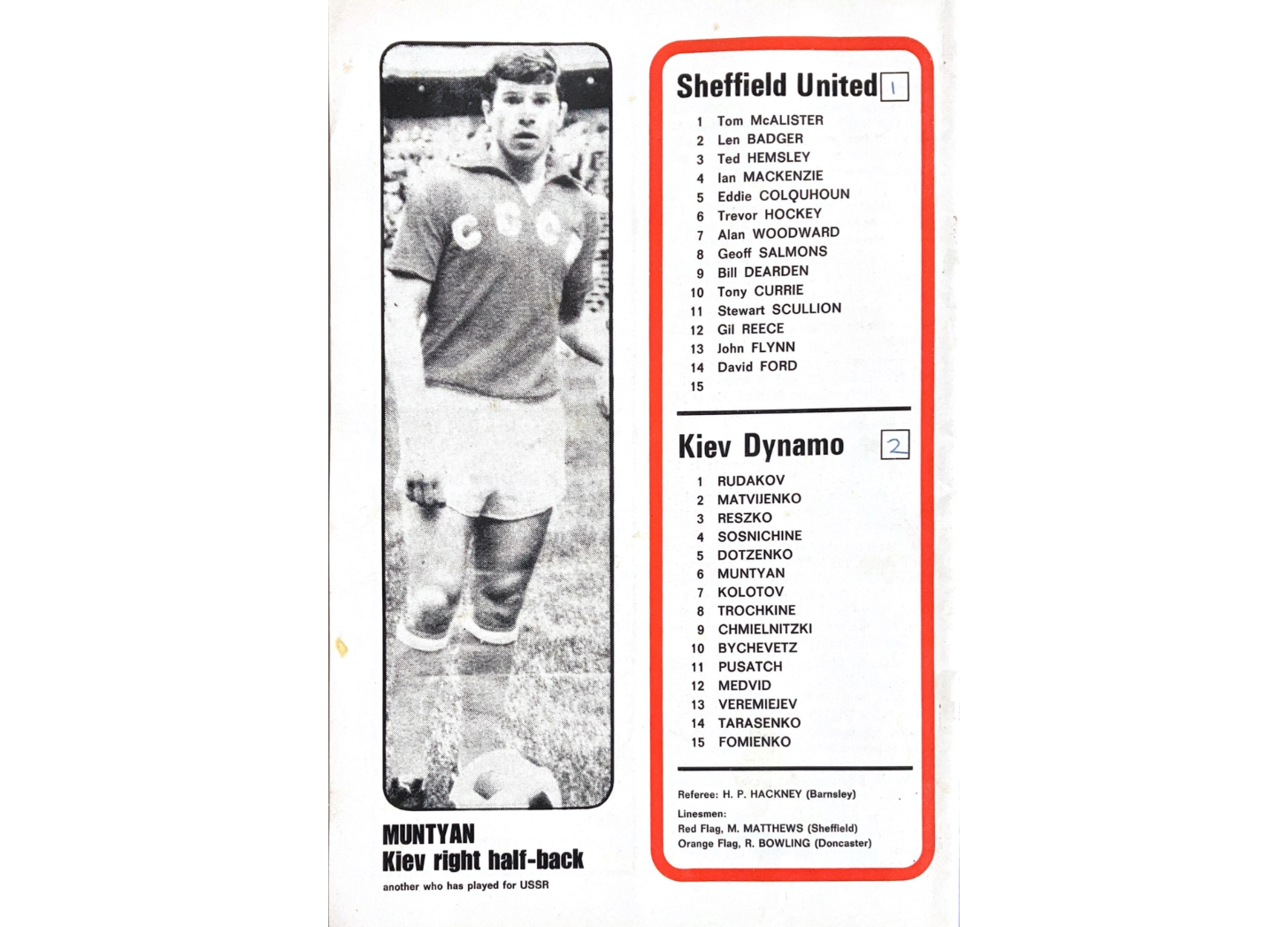
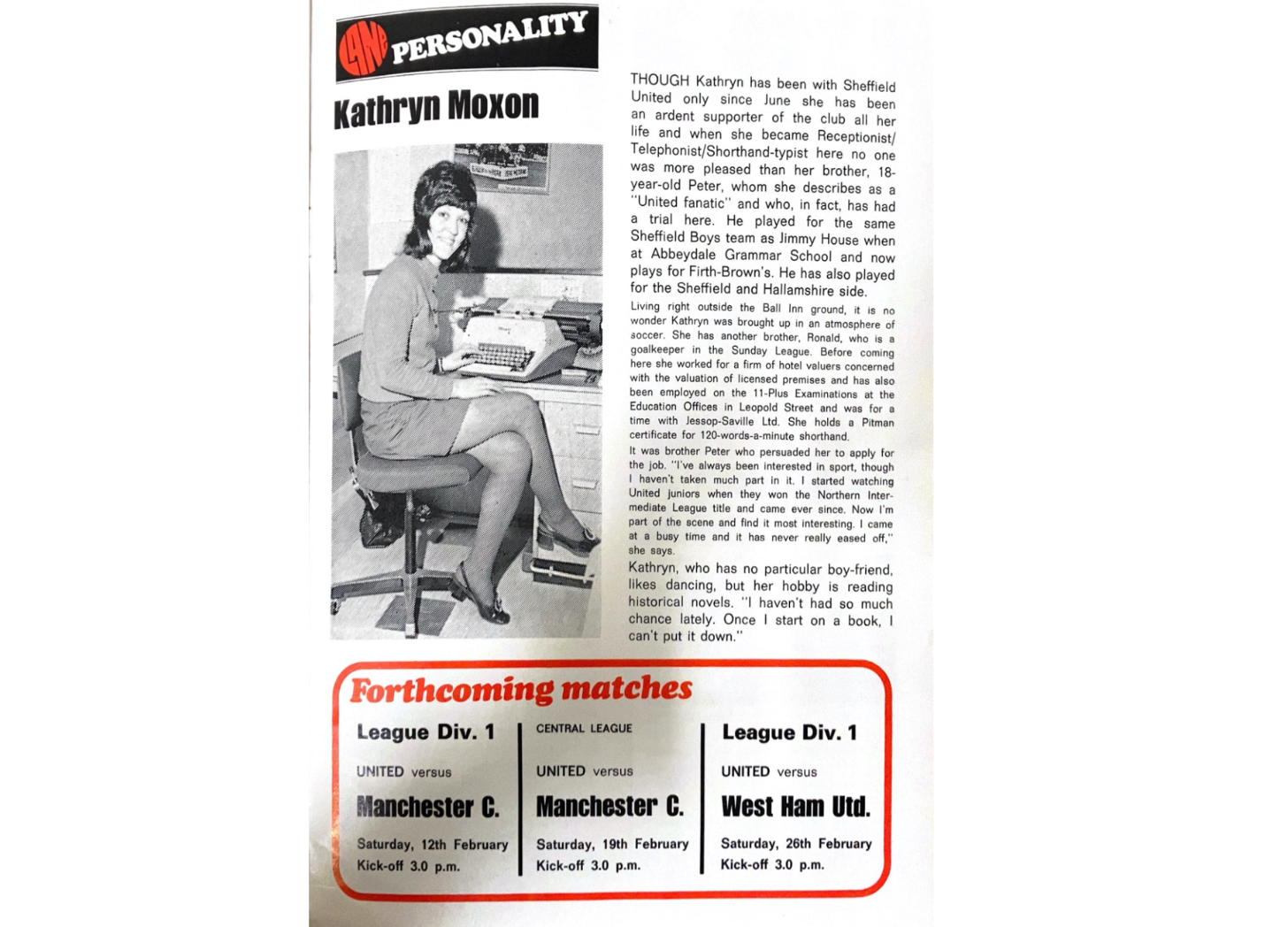
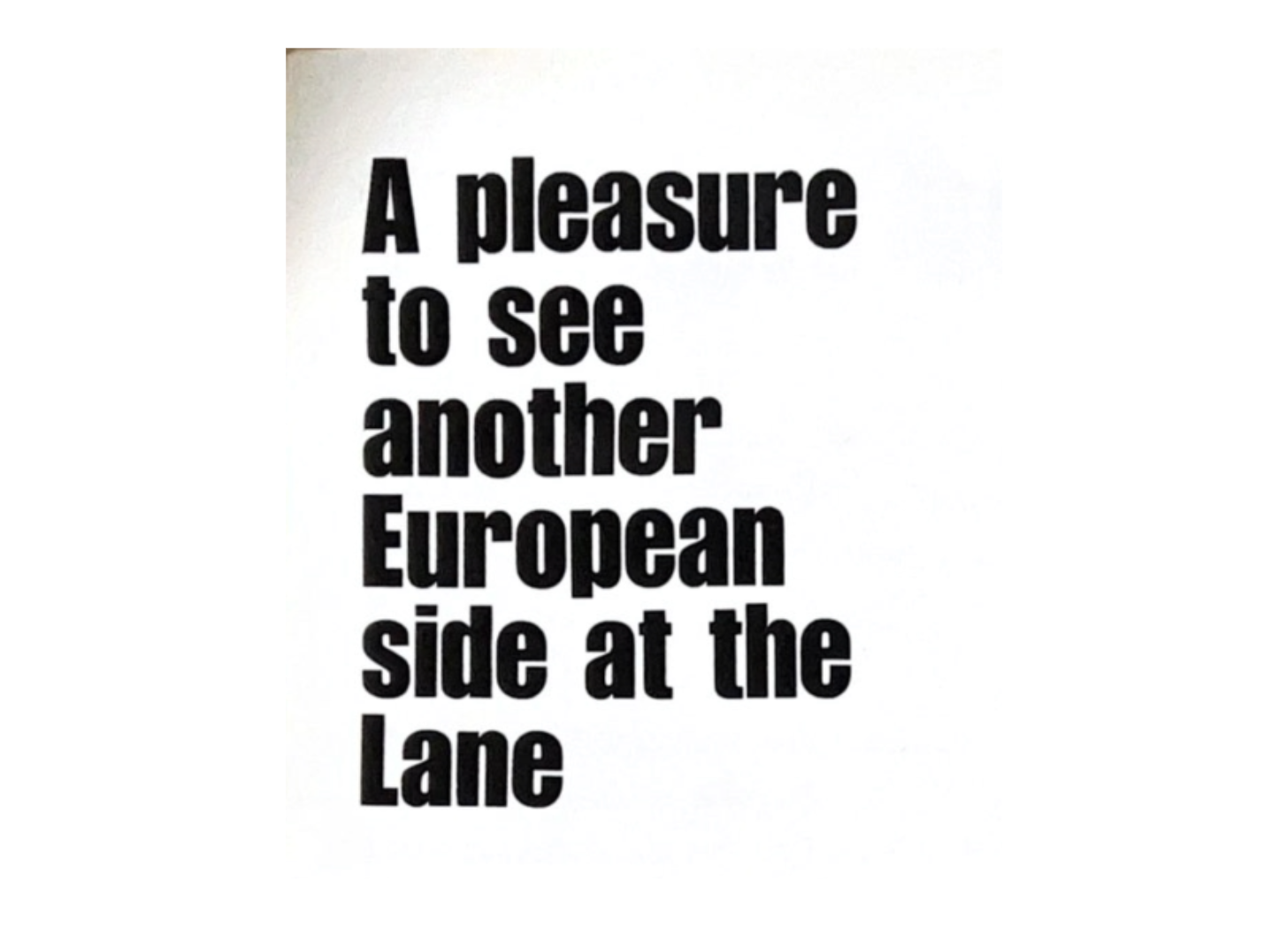
Great article! I was really disappointed to be missing this match as I had already booked to see Black Sabbath at the City Hall that night. I wasn’t a fan of theirs but my mates were all going , so I was going with them. When we got to City Hall, the concert was postponed. We legged it down to the Lane and got in just in time. Fifty one years later, I’m recovering after yesterday’s trip to Brighton. Once a Blade...
Thank you, Nick
That was a really interesting read – fascinating to see how some things change and some things don’t, but football can transcend all.
It was probably quite a daunting journey for the Russian players, but it obviously didn’t affect their footballing skills; and what a brilliant idea to have some of the programme translated for them. A nice touch.
Sue.